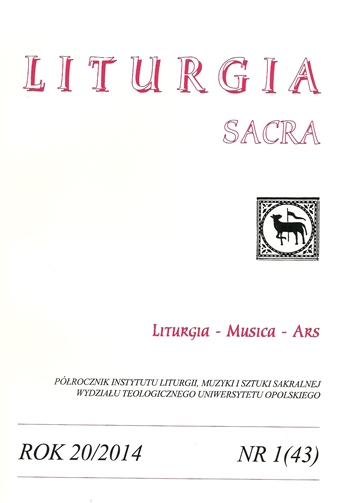Biel papieskiej sutanny w źródłach ikonograficznych i literaturze
The Whiteness of the Papal Cassock in the Iconographic Sources and in the Literature
Author(s): Mateusz WendlandSubject(s): Christian Theology and Religion, Theology and Religion
Published by: Uniwersytet Opolski
Keywords: Papal Cassock; Iconographic Sources; Literature
Summary/Abstract: The peculiarities of life behind the Vatican walls have stirred popular interest since the very first centuries of papacy. This curiosity resulted in the creation of numerous biographical works concerning St. Peter’s successors, as well as inquiries into the rules regulating the pope’s behavior, from the stratification of the Church to seemingly mundane questions considering the papal attire. The latter matter in particular was heavily discussed, as symbolic meanings of papal clothing came to reflect the evolution of ecclesiastical thought across centuries. The tradition of a white cassock serving as a distinct papal garment dates back to the 16th century, and is said to have its origins in the pontificate of Pius V (1566–1572), who, being a Dominican monk, continued wearing the habit of his order after his election. While this explanation is well preserved in historiography, it seems rather unconvincing in the light of iconographic sources, as they show that the white cassock had been worn by Pius V’s predecessors. The history of the white cassock as an integral part of the papal attire can be said to go back to the late 11th century. Literary and iconographic mentions of the garment that Victor III allegedly declined to wear serve as a basis for opposing the concepts proposed by various other researchers. These sources serve as a proof for the ancient origin of the garments, as well as the evolution of their symbolic meaning, undoubtedly influenced by the world view shifts occurring between different periods of history. The sources also show that the white cassock was not seen as conveying any specific ideological or theological message, at least originally. This message became clear as late as in the 13th century, when Gregory X became the Roman Pontiff. It is worth noting that his election led to a new approach to the matter of papal attire, and, consequently, to its various reinterpretations in the centuries to follow. The white cassock ultimately became an inherent symbol of papal authority, undermining the idea of Dominican origins of white as a papal colour.
Journal: Liturgia Sacra
- Issue Year: XX/2014
- Issue No: 43
- Page Range: 209-213
- Page Count: 5
- Language: Polish
- Content File-PDF

